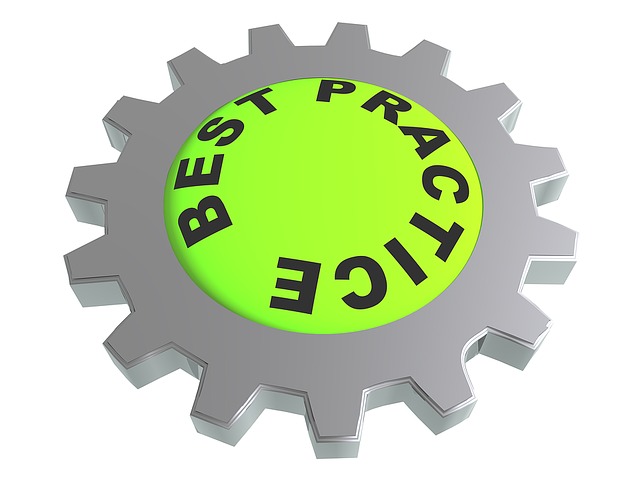 Expanding Your Reach: Impact and Influence in Practice
Expanding Your Reach: Impact and Influence in Practice
As you navigate your professional journey, embracing new ways to enhance your impact and expand your influence is crucial, especially in today’s competitive healthcare market. Consider the recent virtual event that sparked significant introspection and offered powerful strategies for professionals like you. Remember, the essence of influence lies in aligning with the needs of your organization and transcending personal comfort zones to enable growth.
When discussing thought leaders, such as Amy Porterfield, their unscripted insights can resonate with many on both personal and professional levels. Recognize your own concerns about the adequacy of your services or the fear of an unpredictable future? It’s not uncommon. Here’s a strategy you can borrow: allocate a brief period to acknowledge these fears, then shift focus to prioritizing your subsequent critical task. This approach encourages a constructive mindset and keeps your goals within reach.
Moreover, embarking on an entrepreneurial journey often entails moments of discomfort and uncertainty. Initially, it may seem appealing to maintain a sense of security through familiar roles or client relationships. However, recognizing these as potential diversions from your true mission is pivotal. Refocusing on your authentic path can open doors you never expected.
Key Takeaways:
- Acknowledge and address fears: Set aside a small window to worry, then redirect your attention to what’s next.
- Embrace uncertainty: Understand that it’s natural to feel apprehensive when taking bold, new steps.
- Cherish the present to craft your future: Today’s decisions lay the groundwork for tomorrow’s successes.
Treating every step forward as an opportunity for growth primes you for a transformative future, different from today but infused with potential. Strategic planning, partnered with deliberate actions, introduces a myriad of possibilities for what lies ahead.
Innovate within your healthcare practice by implementing new marketing strategies. Whether it’s through podcasts, e-books, or webinars, absorbing the wisdom of varied industry leaders can invigorate your approach and instill the enthusiasm needed to cultivate the practice—and life—you envision.
Influential Voices Worth Your Attention:
- Dr. Josh Axe
- Dave Ramsey
- Carrie Green
- Donald Miller
- Bob Goff
- Andy Andrews
Expand your horizons by dedicating time to learn from these voices. While their expertise may not be healthcare-specific, the universal truths they share are relevant and can elevate your professionalism.
Action Steps to Consider:
- Self-reflection: Identify who your favorite inspirational leaders are and what you can learn from them.
- Continuous learning: Make it a point to engage with content from your chosen thought leaders regularly.
- Intentional plans: Set goals for your practice and strategize on how to achieve them through inspired action.
Are you ready to take control of your professional narrative? Draw from the insight of industry pioneers, dedicate yourself to continuous growth, and watch as the magic of the future unfolds before you.
As always, for further reading on forging meaningful community ties and enhancing your marketing approach, consider exploring additional resources designed to facilitate your growth in these areas.
Amy Porterfield
Amy Porterfield stands out as a gifted entrepreneur whose name is often synonymous with effective online marketing and course creation strategies. Her extensive experience includes working with renowned motivational speaker Tony Robbins, where she excelled as a Director of Content Development before managing major online marketing campaigns.
- Career Evolution: After her tenure with Tony Robbins, Porterfield authored the book Facebook for Dummies, which marked a significant milestone in her career. Since then, she has dedicated herself to teaching business owners and marketers how to leverage digital platforms for growth.
- Teaching & Courses: Your entrepreneurial journey can gain momentum through her well-structured online courses. Her ability to break down complex marketing strategies into actionable steps stands as a testament to her expertise. She focuses on ensuring that you are equipped to sell what your audience desires while maintaining a genuine connection.
- Podcast Influence: She’s not just a strategist; Amy also hosts a podcast, encouraging her audience to achieve high-performance habits. Her approach is less about the hard sell and more about empowerment through consistent, value-driven actions.
- Community Connection: With genuine compassion for her audience, Amy creates a supportive environment. This community-centric approach not only endears her to followers but also amplifies her influence across various online platforms.
Engage with Porterfield’s content, and you’re likely to observe a blend of professionalism with a personal touch—key ingredients for making a meaningful impact in the digital space. Whether through her informative podcast episodes or inspiring keynote talks, her actionable insights resonate with a wide audience, proving that her influence is both deep-rooted and widespread.
Common Questions on Influence and Impact
Assessing the Impact of Actions and Initiatives
To evaluate the effectiveness of a particular action or initiative, you can begin by setting clear objectives and measurable goals. Look at both the qualitative and quantitative outcomes—such as changes in behavior, productivity levels, and financial metrics. Consider using surveys, feedback forms, or KPIs (Key Performance Indicators) to gather data and measure progress against your target outcomes.
Strategies to Elevate Your Professional Influence
To amplify your influence in the workplace, focus on building strong relationships and trust with colleagues. Enhance your communication skills so you can articulate your ideas effectively. Be proactive in taking on challenges and show your capability to lead by example. Networking within and outside your organization can also extend your professional influence.
Influence vs. Impact in Organizational Roles
In the context of an organization, impact often refers to the tangible results or changes your actions have brought about. Influence, on the other hand, is more about your ability to affect others’ decisions, behaviors, or the course of events. Influence can be seen as a precursor to impact—the ability to sway or persuade ultimately enables significant outcomes or alterations.
Leadership Effectiveness: Gauging Impact and Influence
When considering leadership effectiveness, impact can be witnessed through observable changes in the organization’s performance or culture. Influence, however, may be assessed by the leader’s ability to inspire, motivate, and direct team members toward the organization’s goals. Surveys gauging employee satisfaction, retention rates, and progress toward strategic objectives can offer insights into a leader’s influence and impact.
Role of Impact and Influence in Research Success
Your influence and impact within a research context can significantly affect the project’s success. As you advance in the project, ensuring your findings are credible and your methodologies are robust can lead to greater impact. Influence comes into play as you persuade stakeholders of the value of your work, secure funding, or collaborate effectively with peers.
Techniques for Performance Review Influence
During performance appraisals, highlight your achievements with concrete examples and data to showcase your impact. Be prepared to discuss how your work aligns with the company’s goals. Showing readiness to receive feedback and a commitment to professional growth can influence the appraisal’s outcome in your favor. Remember to listen actively and engage in a two-way dialogue.


















































